
A Complete Guide To Opening A Quick Service Restaurant
Last Updated: February 20, 2025
The quick service restaurant (QSR) represents a dynamic and lucrative market segment within the food service industry.
A market analysis from Mordor Intelligence indicated that the US market size in 2024 reached $406.17 billion and is expected to total $662.53 billion in 2029, with a compound annual growth rate (CAGR) of 10.28.
This means that if you’re planning to open a QSR, it’s guaranteed you’ll experience continued growth and relevance in the market.
But we know that diving head-first into the industry requires a lot of grit and business planning. So, we’re here to help.
Here, we have laid out essential strategies, from market research to the list of successful QSRs actively operating, for you to benchmark.
In addition, we mentioned the essential tools you’ll need to create a quick-service workflow, such as digital boards and QR code menus.
What is a quick service restaurant?
Quick service restaurants are a food industry segment that prioritizes delivering food to customers rapidly and efficiently.
Typically, these establishments do not offer table service, and the food is prepared swiftly upon order.
Though the terms ‘quick-service’ and ‘fast food’ are used interchangeably, these restaurants operate under the same franchise and business models.
To put it simply, QSR and fast-food restaurants are the same.
11 strategies to apply when planning to open a quick service restaurant

To give you a head start (though you might already encounter this from your previous restaurant), we have here the essential strategies that may serve as your foundation in establishing your own QSR:
Conduct thorough market research
Understanding the market is crucial before changing the form of your restaurant.
Research the local area first to determine the demand for quick-service dining options. Then, identify your target audience and analyze the competition.
Visiting successful QSRs or reading about fast-food restaurant news can also be helpful. This will help you understand their operations, menu offerings, and customer service.
Use the information you’ve gathered to find a unique selling proposition (USP) for your restaurant.
Develop a solid business
Now that you have the initial step, you can start building your business plan. A well-thought-out plan is essential for any successful business venture.
Here are a few things to do:
- Outline the concept of your restaurant, including your mission and vision. If you already have one, you can use it as long as it aligns with your new branding.
- Present your research findings, such as market needs, target audience, and competitive landscape.
- Describe your menu offerings and any additional services (e.g., delivery, catering).
- Detail how you will attract and retain customers through branding, food advertisements and promotions, and social media.
- Explain your day-to-day operations, including staffing, supply chain management, quick service dining plan, and customer service protocols.
- Provide financial projections, startup costs, revenue forecasts, and break-even analysis.
Choose the right location
Learn how to choose restaurant location for your quick-service business.
Location is a critical factor in the success of a quick service restaurant. So, look for areas with high foot traffic, such as shopping centers, busy streets, or near office buildings.
Ensure the location is easily accessible and has ample parking. Consider the demographics of the area and choose a spot where your target audience is likely to frequent.
Design an efficient quick-service dining plan layout
An efficient layout is vital for this type of restaurant.
Your kitchen should be designed for optimal workflow to ensure food is prepared and served quickly. The dining area should be comfortable and inviting, with a focus on minimizing wait times and maximizing customer turnover.
Invest in high-quality equipment that can handle the demands of a busy QSR.
Create your best menu

Your menu is the heart of your restaurant.
Keep it simple yet appealing, focusing on items that can be prepared quickly without compromising on taste.
Offer a mix of classic favorites, unique dishes, or healthy premade meals to cater to a broad audience.
Regularly update your menu based on customer feedback and seasonal ingredients.
Hire and train a stellar team
Your staff plays a crucial role in delivering a great customer experience.
Hire individuals who are passionate about food and customer service. Provide comprehensive training based on your restaurant training manual to make sure they understand your brand, values, menu, and service standards.
Foster a positive work environment to keep your team motivated and engaged.
Focus on quality and consistency
In the QSR industry, quality and consistency are paramount. Regularly inspect your ingredients and maintain high standards in food preparation.
Consistency in taste, presentation, and service will keep customers coming back.
Implement quality control measures and gather feedback to improve your offerings continually.
Implement a robust marketing strategy
Effective marketing is key to attracting customers to your QSR. Use a mix of traditional and digital marketing tactics as follows:
- Social media
Create engaging content on social media for restaurants to build a loyal following.
- Local advertising
Use flyers, local newspapers, and community events to promote your restaurant.
- Loyalty programs
Implement a reward program to encourage repeat business.
- Online presence
Ensure your restaurant is listed on popular review sites and delivery platforms, and maintain an up-to-date website with an easy-to-use online ordering system.
Leverage technology
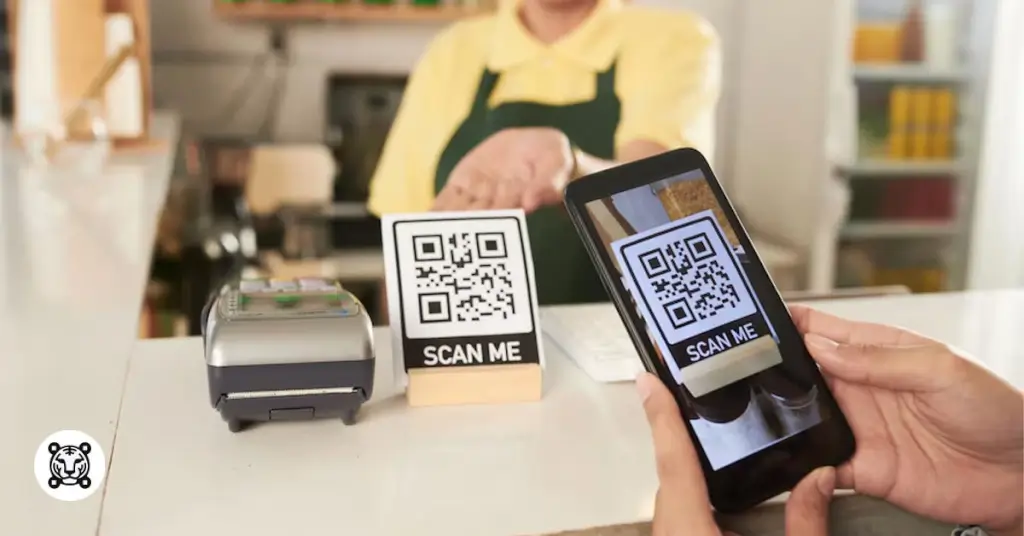
Invest in a reliable point-of-sale (POS) restaurant ordering system to manage orders, payments, and inventory.
Incorporate Kitchen Display Systems (KDS) to improve communication between the front and back of the house.
Integrate self-service kiosks and mobile ordering through a QR code menu to reduce wait times and increase convenience for customers.
These technologies can streamline your operations and enhance the overall customer experience in your restaurant.
Ensure compliance with local regulations
Navigating the legal landscape is a critical aspect of opening and running fast-food restaurants.
Make sure that the business complies with all local, state, and federal regulations. This includes obtaining necessary licenses and permits, adhering to health and safety standards, and complying with labor laws.
Regularly review these regulations to stay updated on any changes. This proactive approach prevents legal issues and builds a trustworthy reputation with customers and authorities.
Monitor the performance of your quick service restaurant
Once your QSR is up and running, monitor its performance from time to time.
Analyze sales data, customer feedback, and operational metrics to identify areas for improvement.
Stay informed about industry trends and be willing to adapt your strategies to meet changing customer preferences and market conditions.
Top 25 fast food restaurants in the United States
Let’s take a look at the top list of QSRs in 2022 based on the QSR Magazine report.
McDonald’s
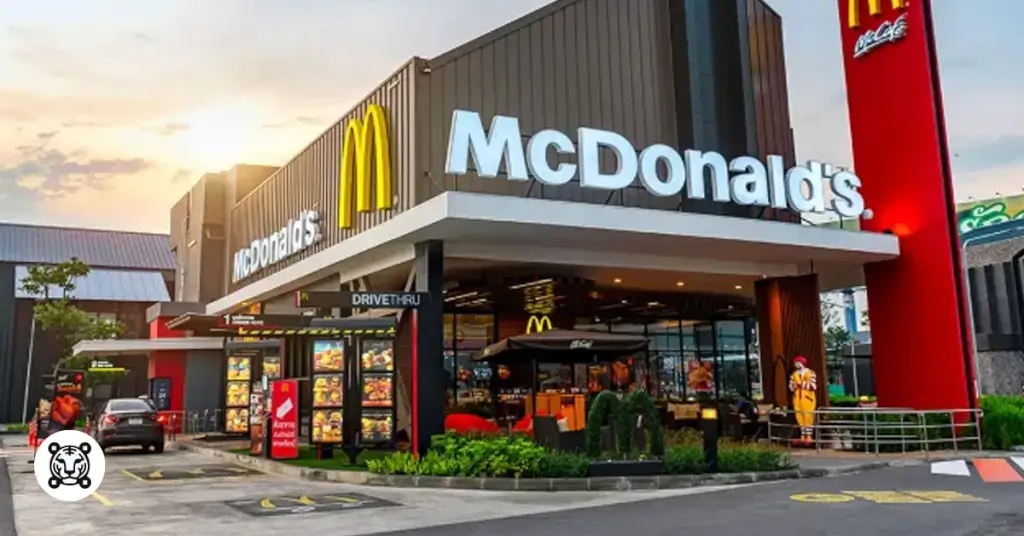
McDonald’s operates in more than 13,000 locations in the United States, making it the largest restaurant chain in the country.
In terms of financial performance, it is reported to have had $53.1 billion in sales in the United States in 2023.
Starbucks
This coffee shop chain has been operating 16,500 stores across the country.
The State with the most Starbucks is California, which has 3,117 stores, accounting for about 19% of all Starbucks locations in the U.S.
Its sales revenue is substantial, at $28 billion, which includes sales from company-operated stores as well as licensed stores.
Chick-fil-A
Chick-fil-A has around 2,800 locations across the country.
Despite being closed on Sundays, it achieved impressive sales figures, generating approximately $18.8 billion in systemwide sales in 2022.
Taco Bell
According to ScrapeHero Data Company, Taco Bell has more than 7,000 stores in 50 states and Washington, D.C.
The company has actively expanded, with a significant number of new stores opening each year.
It has a record of $13.85 billion in systemwide sales.
Wendy’s
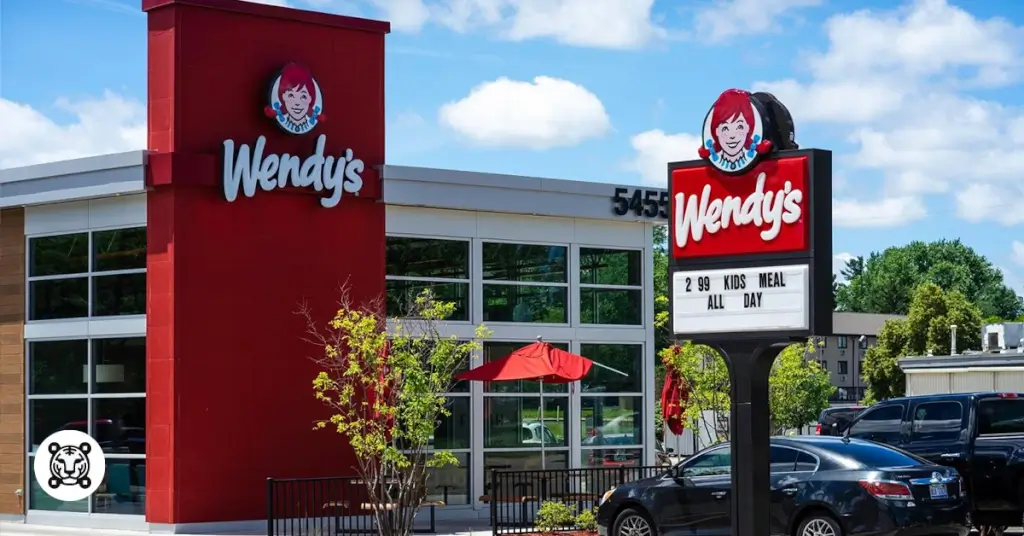
Wendy’s has around 6,000 branches across the United States, with the largest concentration in Florida, Texas, and Ohio.
The company has reported approximately $2 billion in U.S. revenue in 2023. Its growth strategy includes expanding its footprint and enhancing its menu offerings, aiming for continued success and differentiation in the fast food industry.
Dunkin’
Dunkin’ is one prominent quick service restaurant in the industry, specializing in coffee and donuts.
Enterprise Apps Today reports that it already has 8,703 chains covering 46 states. Its most significant presence is in New York, Massachusetts, and Florida.
Dunkin’ has also revealed their $8.34 billion sales, reflecting its strong market presence and consumer demand.
Subway
Nation’s Restaurant News stated that in 2023, Subway had approximately 20,307 locations in the United States, making it the country with the highest number of Subway restaurants.
In terms of sales, this submarine sandwich-famous brand reported significant growth.
For the first half of 2023, Subway saw a 9.3% increase in same-store sales in North America compared to the same period in 2022.
Additionally, digital sales in North America increased by 17.8% during this period.
Burger King
Burger King operates over 7,000 locations in the United States, contributing to its substantial market presence and sales figures.
The company's focus on improving franchisee profitability resulted in an average profitability increase of nearly 50%, reaching about $205,000 per store in 2023, a report from Restaurant Brands International says.
Domino’s

In 2023, Domino's Pizza achieved global retail sales of nearly $18.3 billion.
Within the U.S., Domino's generated approximately $8.7 billion in sales in 2022 and showed strong performance throughout 2023.
In the second quarter of 2023 alone, the company reported over $2.1 billion in U.S. retail sales
Chipotle
A report from Chipotle Newsroom that in 2023, Chipotle Mexican Grill reported total revenue of $9.9 billion, reflecting a 14.3% increase compared to the previous year.
The company operates over 3,400 restaurants globally, with the majority located in the United States. This QSR’s growth strategy includes expanding the number of locations with Chipotlanes, their drive-thru lanes designed for digital orders.
Digital sales play a significant role, contributing $3.7 billion in 2023, accounting for around 37.4% of total sales.
Panera Bread
With more than 2,000 branches operating in 49 states, Panera Bread's revenue was over $4.8 billion in the fiscal year 2022.
Their locations are equipped with advanced digital features, which contributed to 53% of their sales through e-commerce.
Pizza Hut
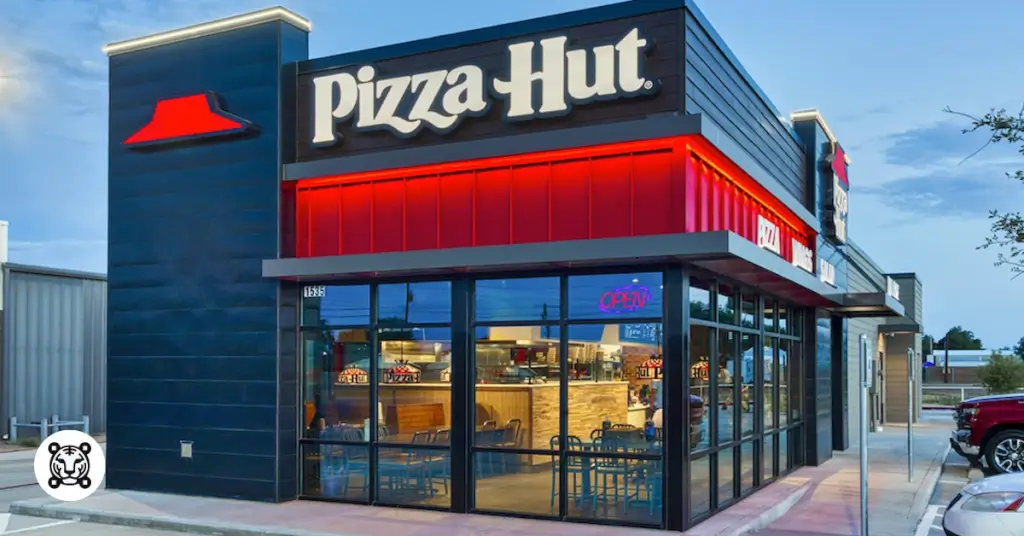
The Pizza Hut’s website recorded more than 6,700 locations open in the country.
System sales reached approximately $4 billion, reflecting a year-to-date growth of about 4% from the total sales of their parent company, Yum Brands.
Sonic Drive-in
Sonic Drive-In has over 3,600 locations and is predominantly franchised, with about 95% of its locations.
The chain’s overall sales reported an approximately $5.8 billion in 2022. This places it among the high revenue-generating fast food chains in the country.
Panda Express
According to Nation’s Restaurant News, Panda Express has a total of 2,374 locations as of 2024.
The Chinese have experienced significant improvement, with systemwide sales jumping from $4.4 billion in 2021 to $5.1 billion in 2022, marking an increase of $711 million over the previous year.
KFC
The Lead Deposit data provider has reported a total of 4,285 locations of KFC.
Regarding sales, in 2022, KFC’s parent company, Yum! Brands recorded that the fast food company’s global revenue was approximately $2.82 billion.
Popeyes Louisiana Kitchen

As of 2024, Popeyes has operated around 3,000 restaurants. The brand has experienced significant growth in recent years, especially since its acquisition by Restaurant Brands International (RBI) in 2017.
Their financial performance has shown remarkable improvement. From 2016 to 2023, its global systemwide sales increased $3.3 billion to $ 6.8 billion.
Additionally, according to QSR Magazine, the brand-adjusted EBITDA (Earnings Before Interest, Taxes, and Amortization) rose from $90 million to approximately $280 million during the same period.
Dairy Queen
Dairy Queen, which is known for its iconic Blizzards and soft-serve ice cream, continues to be a popular choic among fast food and dessert lovers in the country.
The chain's extensive presence spans 49 states, operating over 4,300 locations.
According to QSR Magazine, the 2022 sales amounted to approximately $4.579 billion. This figure positions this business as one of the leading dessert and snack chains in the country.
Arby’s
There are 3,413 locations of Arby’s restaurants across the United States. Ohio has the highest number with more than 200 locations, representing 8% of all Arby’s in the country.
In terms of sales, this restaurant reported an annual revenue of $4.5 billion in 2023, including sales nationwide.

Jack in the Box
The company has more than 2,000 locations with California accounting for 943 restaurants, which is about 43%.
Jack in the Box has seen increasing sales in recent years. In 2023, their sales amounted to $846.2 million, marking an increase from approximately $701 million last year.
Papa John’s
In 2023, the number of Papa John’s restaurants totaled 3,220, marking an increase in both company-owned and franchised locations compared to the preceding year.
According to the company’s fourth-quarter report for 2023, the global system-wide restaurant sales were $5.04 billion, thanks to the 89 net unit openings by 36 locations in North America and 53 internationally.
Little Caesars
This Pizza chain has a record of 4,203 locations as of November 2023.
According to the Statista 2021 report, it has garnered 4.23 billion in sales in the US and was forecasted to decrease to 3.52 billion in the following year.
But went to $4.3 billion in sales in 2022, according to the Restaurant Business Magazine.
Whataburger
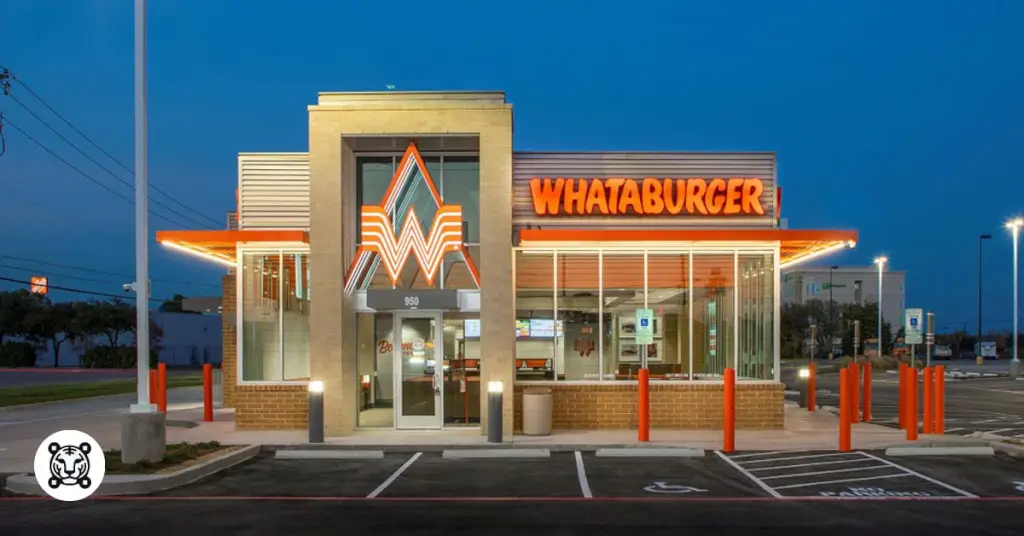
Whataburger, a Texas-based fast-food chain, operates over 950 locations across 14 states in the U.S.
In 2023, the chain has a systemwide sales exceeding $3 billion, which earned it the 34th spot on the Franchise Times Top 400 list.
The company is planning to expand to the Midwest and open locations in Las Vegas.
Raising Cane’s
Renowned for its chicken fingers, the chain has been experiencing rapid growth. As of 2023, it operates to over 700 locations, with ambitions to reach 1,500 in the coming years.
In terms of sales, Raisin Cane reported $3.11 billion systemwide and an impressive unit volume (AUV) million per store.
Culver’s
The chain, known for its ButterBurgers and frozen custard, continues to expand with plans for adding locations to ther 900 stores.
It has also demonstrated robust financial performance, with its 2020 sales report at $1.7 billion.
Jersey Mike’s
The chain has shown significant growth, making it one of the fastest-growing restaurants in the country, with more than 2,000 locations.
Financially, Jersey Mike’s generated over $2.2 billion in sales recently, demonstrating a strong market presence.
The company is also considering a potential sale valued at around $billion.
Pro tip: Add QR code menus for a better quick service operation
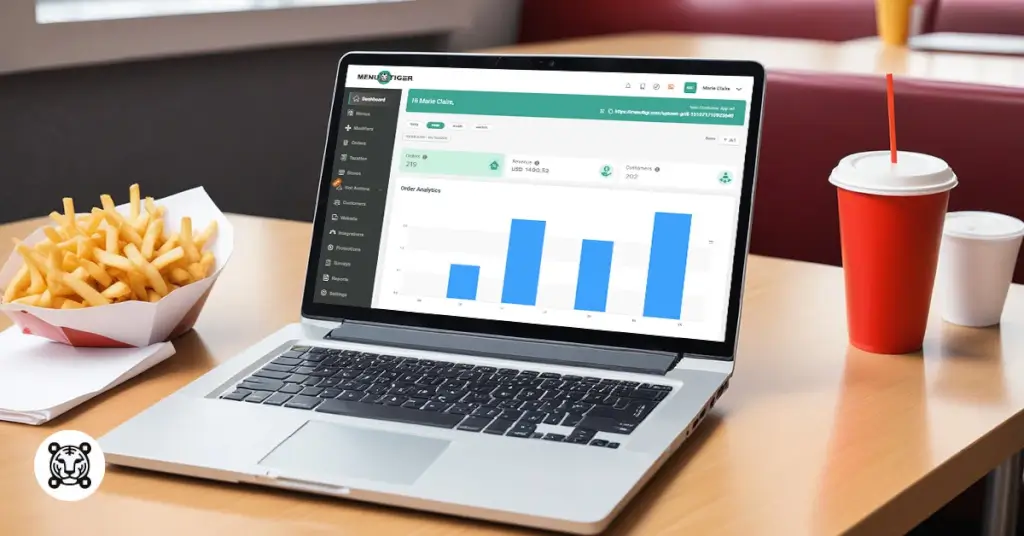
What makes a quick service restaurant different from other restaurant segments is the fast-paced workflow.
The layout is different from other traditional setups, particularly in the order-taking process.
Some use digital menu boards on the counter, paper menus, or self-service kiosks to streamline their operations.
If you don’t have the budget yet to install these technologies, having paper menus coupled with a digital menu QR code is a cost-efficient decision.
To give you a rundown of the pros, the MENU TIGER QR code menu provider is here to lay it all down for you:
Systematic order and pay flow
Apart from having your traditional paper menu sheets ready for those dine-in orders, you can put a menu QR code on table tents for those who want to do a take-out.
Those customers can directly scan the code using their smartphones and be directed to your digital menu, where they can place and pay their orders simultaneously.
MENU TIGER software offers e-payment alternatives like PayPal and Stripe to cater to both local and foreign customers.
Easy collection of sales data
Because orders are made digitally, you can generate a report of your sales through Loyverse integration which makes it easier for you to analyze how well your business does in daily operations.
Using this data, you’ll be able to make informed business decisions.
Efficient assistant to your staff
Your staff plays many roles at the same time, especially when you’re operating with a limited number.
So, it would be a great help for them to have a system that allows them to accommodate customer requests without delays.
Smart restaurant software, like MENU TIGER, provides a restaurant waiter call button system, where customers can use the digital menu to make requests, such as cleaning the table or purchasing additional tissues.
This also streamlines service by ensuring tasks are assigned efficiently, aligning with the food runner job description, which typically includes delivering orders, clearing tables, and assisting waitstaff.
By integrating technology, you can enhance both speed and customer satisfaction while supporting your team in managing their workload effectively.
Customer feedback collection
Getting feedback from your customers is the valuable insight you’ll need to have, especially in fast food service.
The best way to collect them effectively without interrupting your customers is to have them take the survey at their own convenience using their devices.
The responses will automatically be input into the software for your reference.

Launch the most advanced quick-service food business with MENU TIGER QR code menu software
Opening a quick service restaurant is a total milestone for you.
Although you already have the best experience in the restaurant industry, this type of restaurant is another gameplay.
So, to keep up with the demands in this restaurant segment, you need to level up by leveraging technology like QR code menus in addition to what you already have.
But, finding a menu QR code provider that lets you do more than just streamline the ordering and paying process will be helpful in advancing your overall services.
Good thing that MENU TIGER provides you advanced features that guarantee to assist you in making your quick-service business live up to its name.
To know more about this, just visit the website, create an account, and navigate through the best tool for your new business journey.
FAQs
Chevy
Before joining MENU TIGER's Content Team, Chevy has been dabbling in literary arts for five years, specifically creative writing in a theatre company. She loves exploring her creativity through painting, photography, and contemporary dancing.


